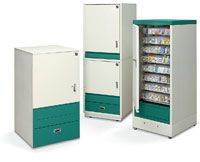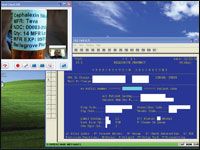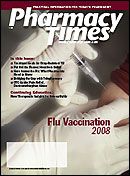Telepharmacy Bridges the Gap Between Access and Adherence
Bellegrove Pharmacy is bringing medication to patients in need with remote dispensing at 3 telepharmacy sites.

Registered Pharmacist SteveSinger is using technology ona large scale in the PacificNorthwest. Bellegrove Pharmacy(Bellevue, Washington) operates 3telepharmacy sites with plans foradditional sites throughout the state.
The locations use TelepharmacySolutions from the AmerisourceBergenTechnology Group. Telepharmacy Solutions'Automating Drug DispensingSystems (ADDS) integrate remote orlocal pharmacist-controlled dispensingsystem cabinetry and software, pharmacysoftware, and televideo technologyinto one seamless system. As acost-effective alternative, telepharmacycan be used in local and rural clinics,nursing homes, assisted living centers,Department of Defense clinics, andVeterans Affairs?community-based outpatientclinics.
Bellegrove Pharmacy opened its firsttelepharmacy at Stillaguamish TribeClinic at Island Crossings Center inArlington in March 2006. Two locationsopened in 2008 at Royal City Clinic(January) and Mattawa CommunityClinicin (May).
Before Bellegrove Pharmacy couldopen a telepharmacy site, it neededapproval from the Washington StateBoard of Pharmacy. Singer said theboard has no formal rules for retail telepharmacies."Obtaining approval requiresa presentation to the board,detailing the rational for allowing atelepharmacy, policies and procedures,equipment review, and an on-site inspectionof the remote site and the centralpharmacy."
The approval process for StillaguamishTribe Clinic was time consumingas the board had never approveda retail telepharmacy. The pharmacyspent more than 6 months working withthe board and board consultants preparingfor the presentation and inspection.Once approval was received, it waslimited to 1 telepharmacy for 1 year,with the requirement that the pharmacyreport back at the end of 1 year toupdate the board on the progress andchanges in procedures based upon theexperience.
"Telepharmacies allow Bellegrove toprovide pharmacist and pharmacy servicesin communities that otherwise donot have convenient access to a pharmacist.The system allows us to providethese services at a cost that cannot beduplicated with a pharmacy and pharmacistin the community."
The pharmacy chose TelepharmacySolutions after reviewing other systemsand conducting site visits. "We preferredthe system because of the enhancedsecurity features that allowed, in ouropinion, greater accuracy," said Singer.
"Telepharmacy brings cognitive pharmacycare to underserved areas,"said Scott Tague, director of sales forTelepharmacy Solutions. "Because thepharmacist is controlling the system, itallows for greater patient compliance,which has an immediate benefit for thepatient. Furthermore, it allows a pharmacyto grow the business without a?brick and mortar' pharmacy."
Telepharmacy Solutions' ADDS isavailable in 3 offerings, which are allnarcotics secure. The ADDS 2.0 storesand dispenses from 27 to 36 nonuniformly packaged unit-of-use medications,and holds between 10 and 20units of each individual medication. Thecabinet is ideal for dispensing pediatricsuspensions, oral contraceptives, inhalers,small intravenous bags, and othernonuniformly packaged medications.
The ADDS 3.0 stores and dispenses60 different medications, and holds 18bottles per medication for a total unitcapacity of 1080 bottles. The cabinetdispenses oral solids, which are repackagedin standard 75 mL plastic vials, andstacked in 60 vertical columns withinthe ADDS cabinet. This system can siton top of the ADDS 2.0 to minimize theneed for additional floor space.

The newest offering is the ADDS 8.0.Under pharmacist control, this systemdispenses single units of up to 80 medicationsin nonuniform, unit-of-use packaging.The system houses 8 medicationtrays, each with up to 10 rows of spiralhelixes and configurable to store 5 to 30units per medication. System featuresinclude password-protected user control,triple-check barcode scanning, andpoint of care prescription dispensing.
The medication the systems can dispenseis dependent on what the clinicis dispensing. "Pharmacists can meetwith the doctors to discuss formulary.This technology offers the opportunityfor the pharmacist and doctor to collaborate,and it has been working verywell," said Tague.
ADDS technology ensures dispensingand safety through the prescriptionreview process by which medicationsare triple verified by the system.Each column in the ADDS cabinet isdesignated to a specific bar code. Allmedications have a bar-coded label thatmatches the designated column number.Medications are initially scanned whenloaded into the dispensing cabinet, andscanned a second and third time whendispensed from the cabinet and whenthe patient-specific label is printed. Theloading and dispensing processes arefully under pharmacist control. Thepatient and medication label will not beprinted until the proper medication isdispensed and is verified by scanning.
Singer said the system's ease of useand interoperability also are importantfeatures. Training the technicians andpharmacist took only about 2 weeks."The technician managing the remotesite (depending on prior experience)dedicated a week at the home site tolearn how we process prescriptions.The technician spent another week atan established telepharmacy to workwith the remote site technician."
The pharmacist did not require a lot oftraining to adapt to the system "becausethe check-off and verification processesare very similar to what would be donein a normal retail setting. For our telepharmacist,it took about 2 weeks to getaccustomed to the video camera andtalking to patients remotely."
The telepharmacy system can functionas a stand-alone system, but inSinger's case and the vast majority ofsites, a pharmacy's existing softwarecan interface with the system.
Staff feedback has been positive,said Singer. One pharmacist said, "Telepharmacyis of great benefit to the localcommunity. It provides medicine in realtime to the locals." A technician shared,"The pharmacists at the home site appreciatethe accuracy and confidentiality ofthe telepharmacies. The bar code on thestock bottles against the patient labelensures accuracy. The headset allowsus to counsel our patients without thefear of violating a patient's privacy ifanother party accidentally overhearsthe conversation."
The future of telepharmacy is bright,according to Tague. He feels it is goingto expand throughout the United Statesover the next several years as more cliniciansand regulating bodies embrace thetechnology. "We have systems acrossthe United States and not just a concentrationof sites. Every state has its challengeswith geography and access."

